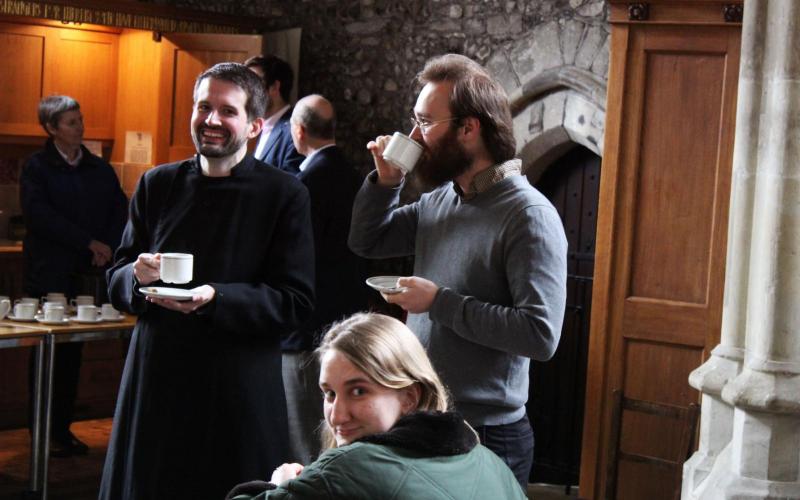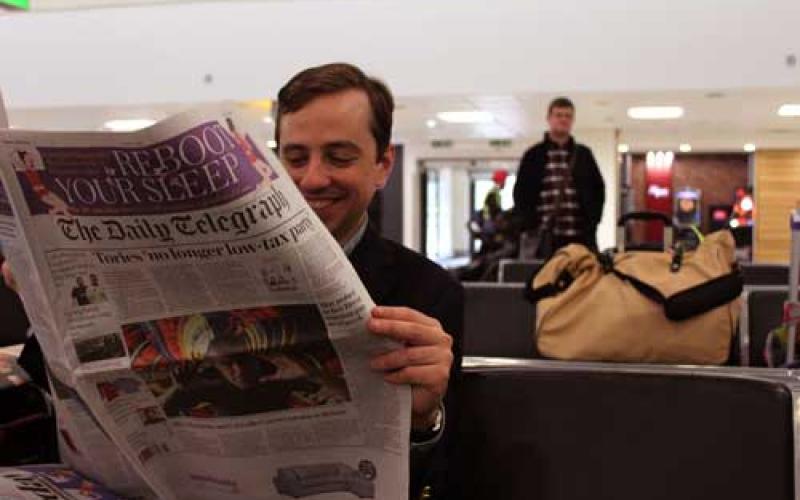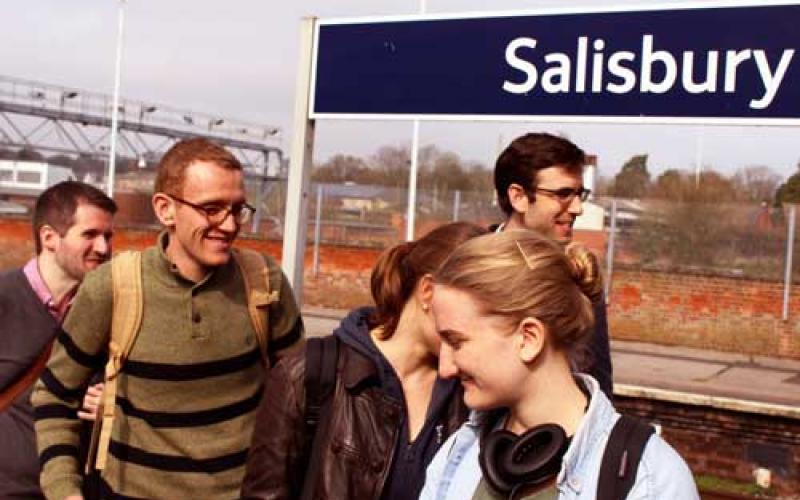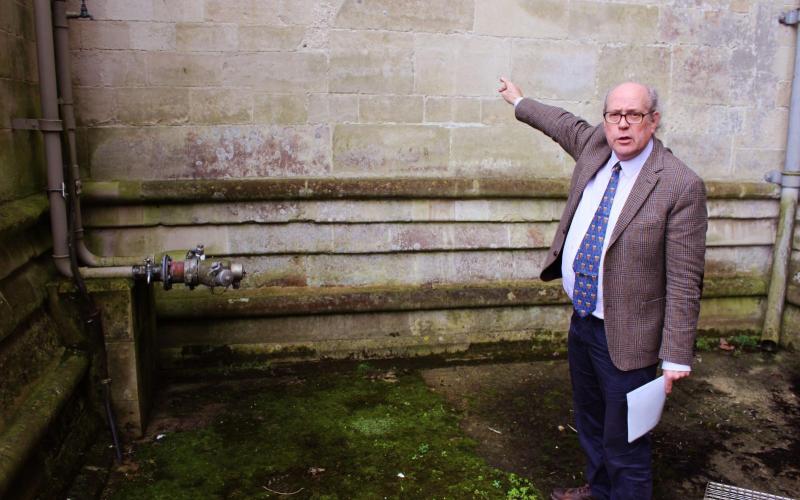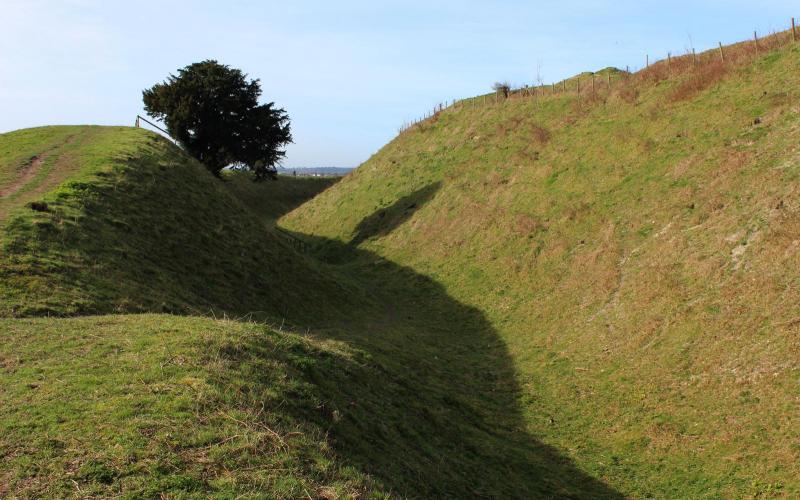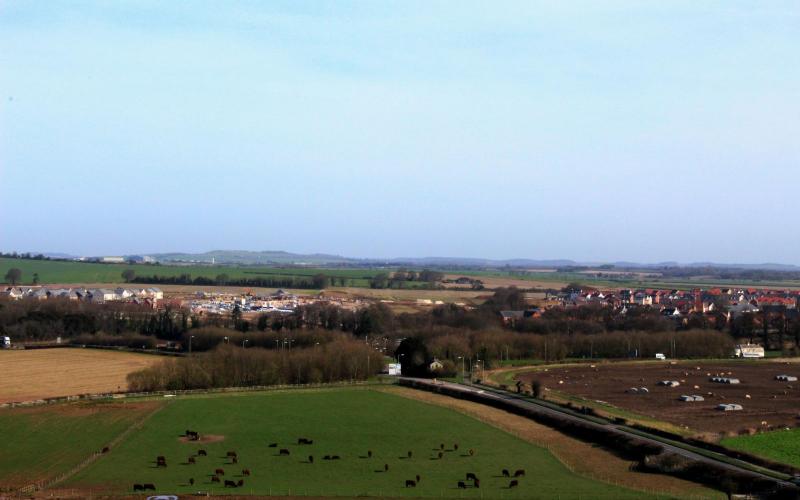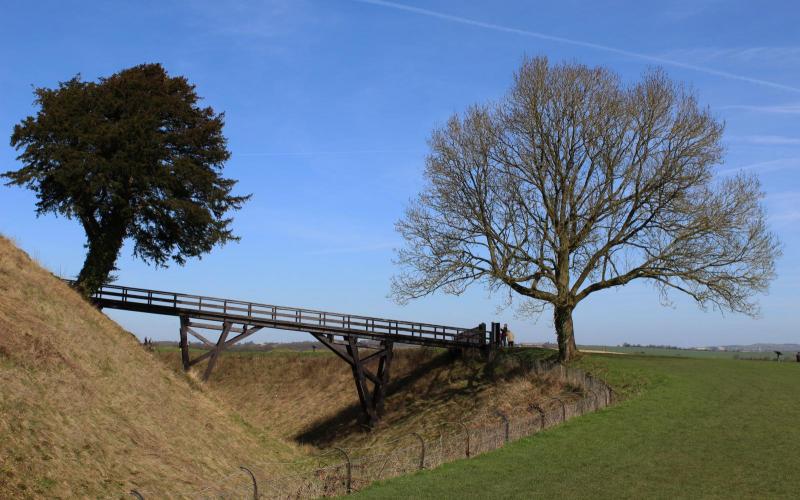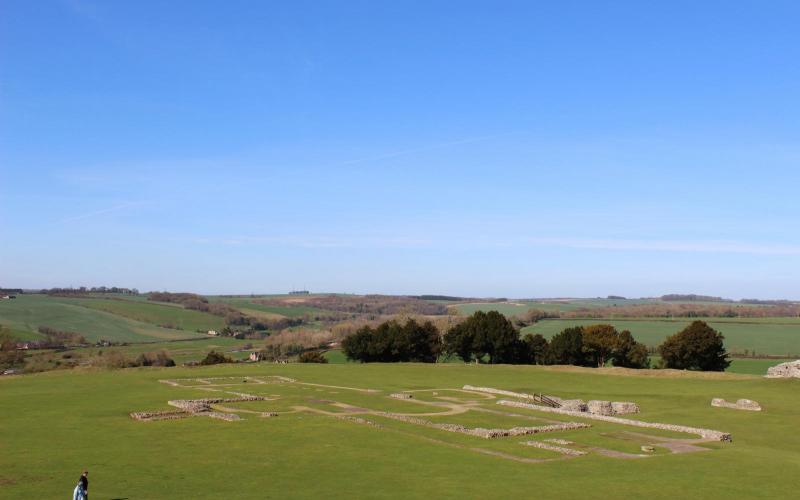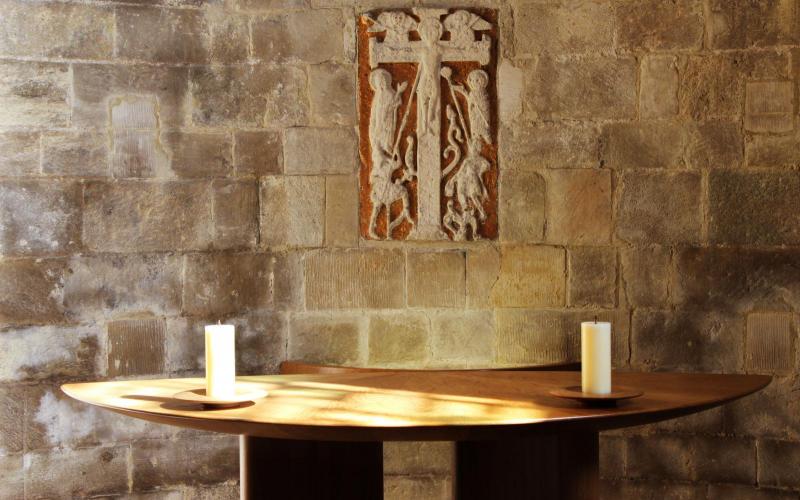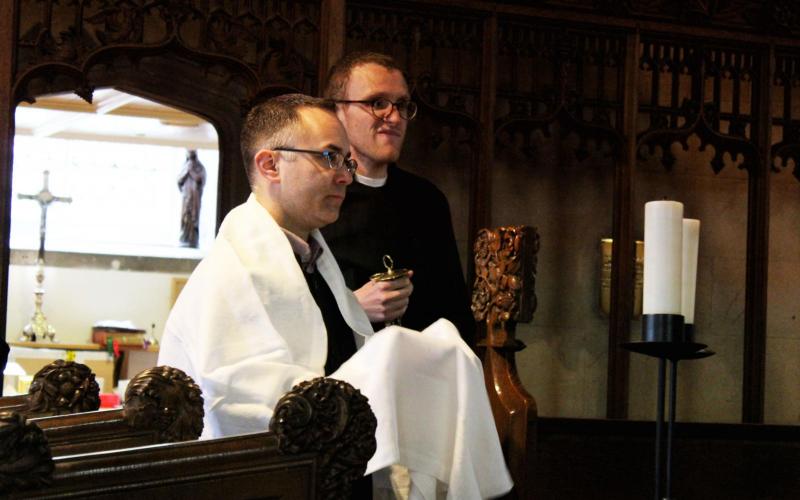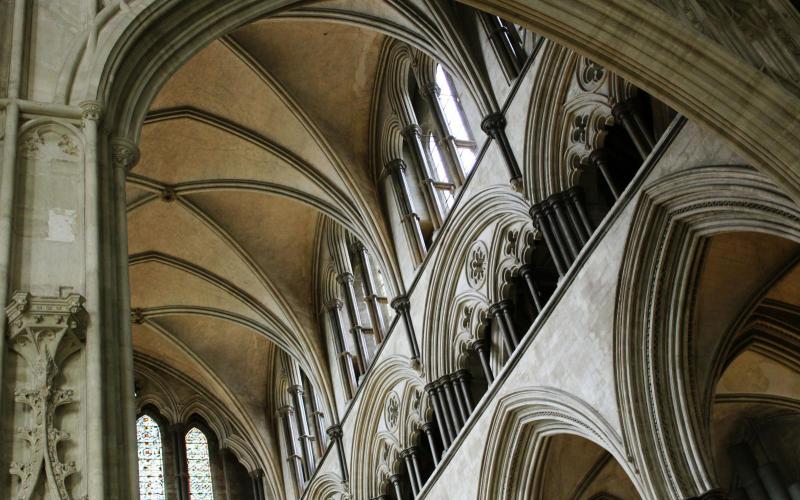Ed. Note: Again this year, during spring break a merry band of pilgrim/scholars embarked on an extended field trip in connection with a class taught by ISM faculty. Professors Bryan Spinks and Henry Parkes led students to England for in-depth exploration of themes from the class “The Liturgy, Ritual, and Chant of Medieval England (Sarum Use).” This is the fourth such travel seminar for the ISM, which will invite proposals from other departments in order to offer the opportunity to more Yale students in the future (see “Space Update and New Initiatives” here).
Student Reflection
Kristina Potuckova, Ph.D. candidate in Art History
The field trip component of the “Liturgy, Ritual, and Chant of Medieval England” travel seminar, co-taught by Professors Bryan Spinks and Henry Parkes, provided a valuable opportunity for the students involved to connect what they have learned in the course to the actual physical spaces and practices being studied. In the form of a less tangible benefit, the travel seminar opened up a much-enjoyed platform for sharing knowledge and experiences between the students from Yale College, , the Divinity School, and the Graduate School.. Early-morning discussions of finer and broader points of Christianity in its many varied forms, current and historical, and late-night bonding via charades bookendeddays filled with exploring the light-filled spaces of medieval architecture in England and interacting with the book culture of the cathedral libraries of Salisbury and Hereford. Salisbury Cathedral, its solemn grandeur easily dominating the surrounding town as it has for centuries, became a familiar feature of our landscape in only a few days, just as its medieval liturgy dominates the course itself.
During this trip, I have often been reminded that nothing in the classroom can truly prepare you for experiencing the space of a church as it was envisioned in medieval architecture. It takes so many forms - the airiness of the vast interior of Salisbury, the dizzying intricacy of the perpendicular ceiling at Sherborne Abbey, or the majestic solidity of Romsey Abbey - and yet remains tantalizingly incomplete without the glories of its liturgies, its music traditions. Yet, even on this point, the travel seminar pulled the sensorial experience a little closer. The choral services at Salisbury and Hereford, and Professor Parkes’s organ demonstration at Romsey all had the potential to weave the delicate threads that connect knowledge and experience, whether propelled by religious or academic interest.
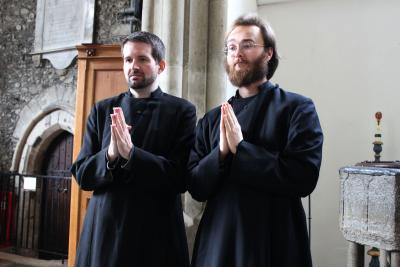 The trip culminated with the performance of the Mass of the Holy Name of Jesus according to the medieval Use of Sarum. We all participated in an opportunity to personally observe and experience a form of late medieval worship with much-needed and appreciated assistance from Professor John Harper. Tackling the many moving parts of late medieval English liturgy as it was recorded in the diocese of Salisbury proved to be an eye-opener to me. Doing so in a place that has served as a place of worship for a thousand years only enhanced the sensation of being overwhelmed by the complexity of the ritual, the absorption and attention to detail it required of us all. When, three rehearsals later, the moving parts came together in a cohesive performance of the Mass, the experience turned out to be exhilarating as well as exhausting.
The trip culminated with the performance of the Mass of the Holy Name of Jesus according to the medieval Use of Sarum. We all participated in an opportunity to personally observe and experience a form of late medieval worship with much-needed and appreciated assistance from Professor John Harper. Tackling the many moving parts of late medieval English liturgy as it was recorded in the diocese of Salisbury proved to be an eye-opener to me. Doing so in a place that has served as a place of worship for a thousand years only enhanced the sensation of being overwhelmed by the complexity of the ritual, the absorption and attention to detail it required of us all. When, three rehearsals later, the moving parts came together in a cohesive performance of the Mass, the experience turned out to be exhilarating as well as exhausting.
The best way to sum up this trip is to say I had many experiences I never would have expected, surprises of the very best kind. (After all, I can now truthfully say I have had tea with the dean of the Salisbury Cathedral.) Very few people have experienced a trip quite like this one!
[tour photos by Wenbin Gao]
